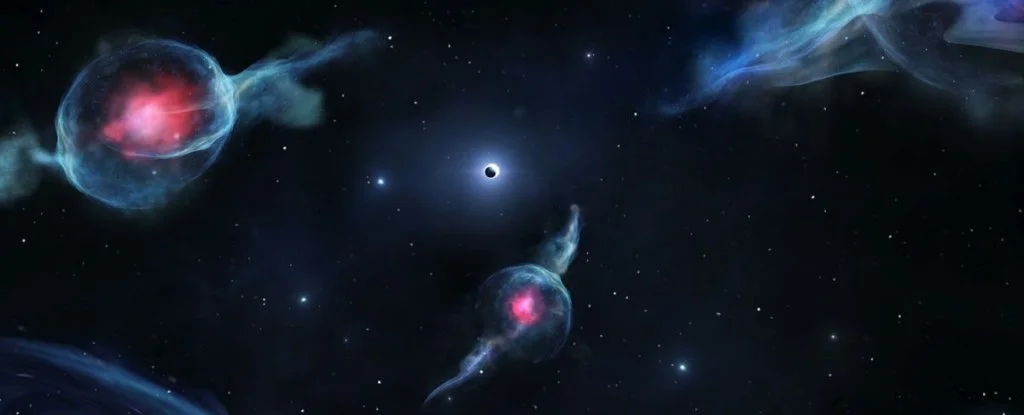There is a noticeable gap in the calculations and observations of black holes: the black holes discovered by astronomers are much larger than the theoretical lower limit of the masses of such objects. And now scientists have found a pulsar system and a companion object that fall within this “mass failure.”
Astronomers are looking for systems of massive objects such as neutron stars, white dwarfs, and black holes to test theories of gravity. The best place to look for such objects is globular star clusters.
The density of stars at the center of such clusters is quite high, so objects there meet and interact more frequently. In particular, neutron stars take in low-mass main sequence stars and accumulate mass by “absorbing” their matter. This is how low-mass X-ray binary stars arise, one of whose objects is a rapidly rotating neutron star, a millisecond pulsar. Scientists are testing the theory of gravity on such systems.
While searching for similar objects in globular star clusters using the MeerKAT radio telescope (South Africa), astronomers discovered 13-millisecond pulsars, including three massive binary stars in NGC 1851 in the constellation Dove. The companion of one of them, PSR J0514-4002E, attracted the attention of scientists with its mass. They explained the discovery in the magazine Science.
If the companion were a main sequence star, it would be visible in the optical range. However, it was not possible to find a suitable object in Hubble’s observations. It looks like it should be very compact. After analyzing the pulsar’s “ticking” and calculating its motion, the study’s authors concluded that the companion’s mass was between 2.09 and 2.71 solar masses.
This is more than the largest pulsars whose masses have been accurately measured: PSR J0740+6620 (2.08 solar masses) and PSR J0348+0432 (2.01 solar masses). And fewer of the smallest black holes (about five solar masses) are found in binary systems. That is, this object is in the “mass fall” of black holes – the gap between observation data and the theoretical minimum mass of a black hole formed during the collapse of a neutron star (2.2 solar masses).
According to scientists, the PSR J0514-4002E system is the product of a “secondary encounter”, given its location in the dense globular cluster, the eccentricity of the orbit, the rapid rotation of the pulsar and the large mass of the companion. . The authors of the article assumed that the pulsar rotates by absorbing the matter of its first “neighbor” and only then meets the current massive companion.
Judging by the mass, the new companion may have formed from the merger of a binary neutron star or a neutron star and a black hole. Thanks to analysis of gravitational waves, astronomers are aware of several such events, and the mass of the companion matches the estimated masses of the participants in these mergers (GW190814, GW191917, and GW200210).
Unfortunately, based on indirect data such as the rotation of the pulsar and the orbit of its orbit (there is a lack of measurement accuracy), it is impossible to accurately determine whether the companion is the most powerful known neutron star or the smallest black hole. with “mass collapse”.
If this object can be confirmed to consist of a radio pulsar and a black hole, PSR J0514-4002E will be the first such system in the history of observation. And this will be a holiday for astrophysicists, because such a pair will allow the Theory of General Relativity to be tested.













